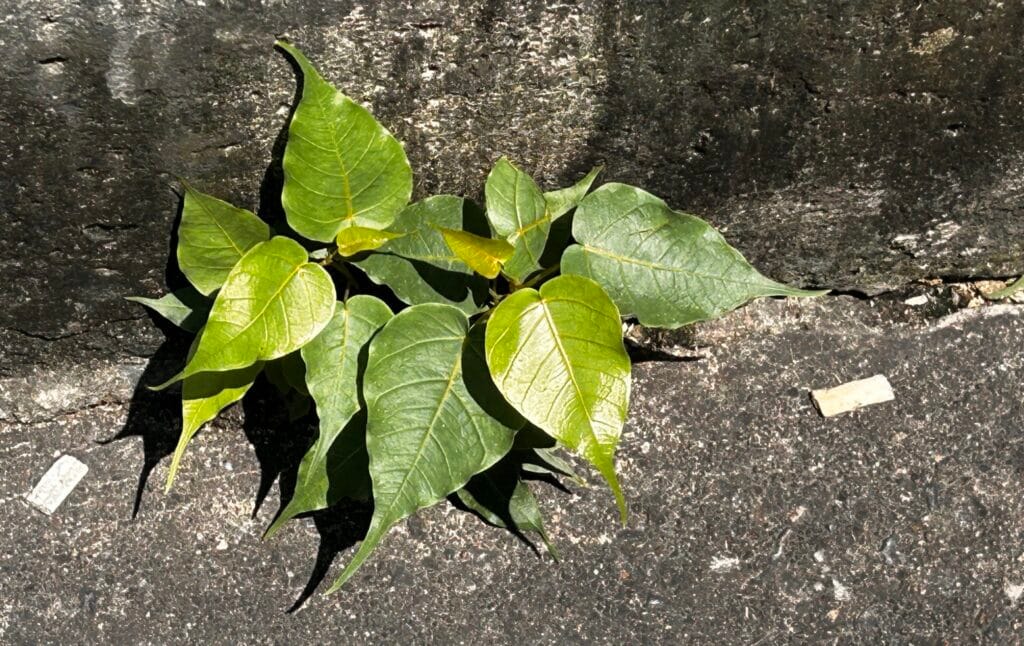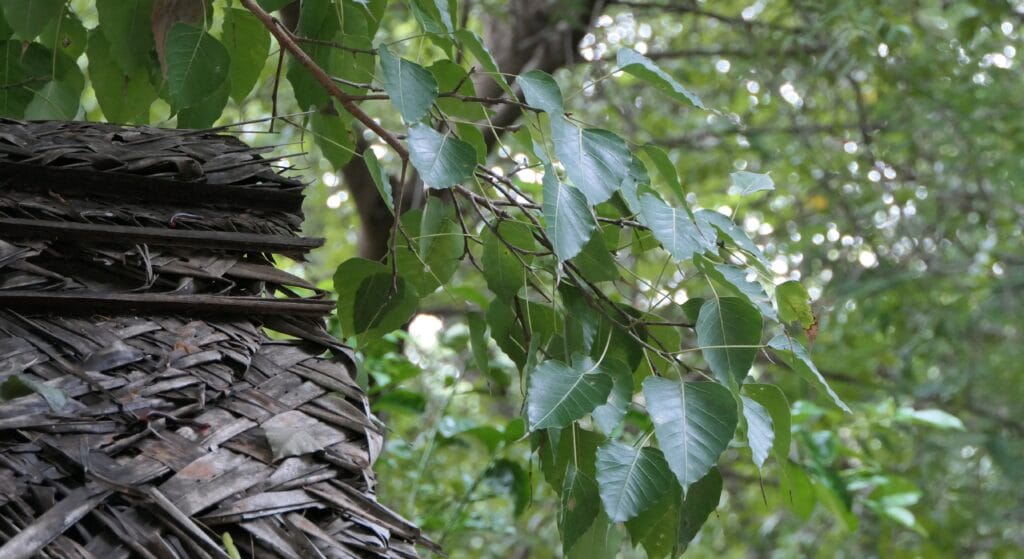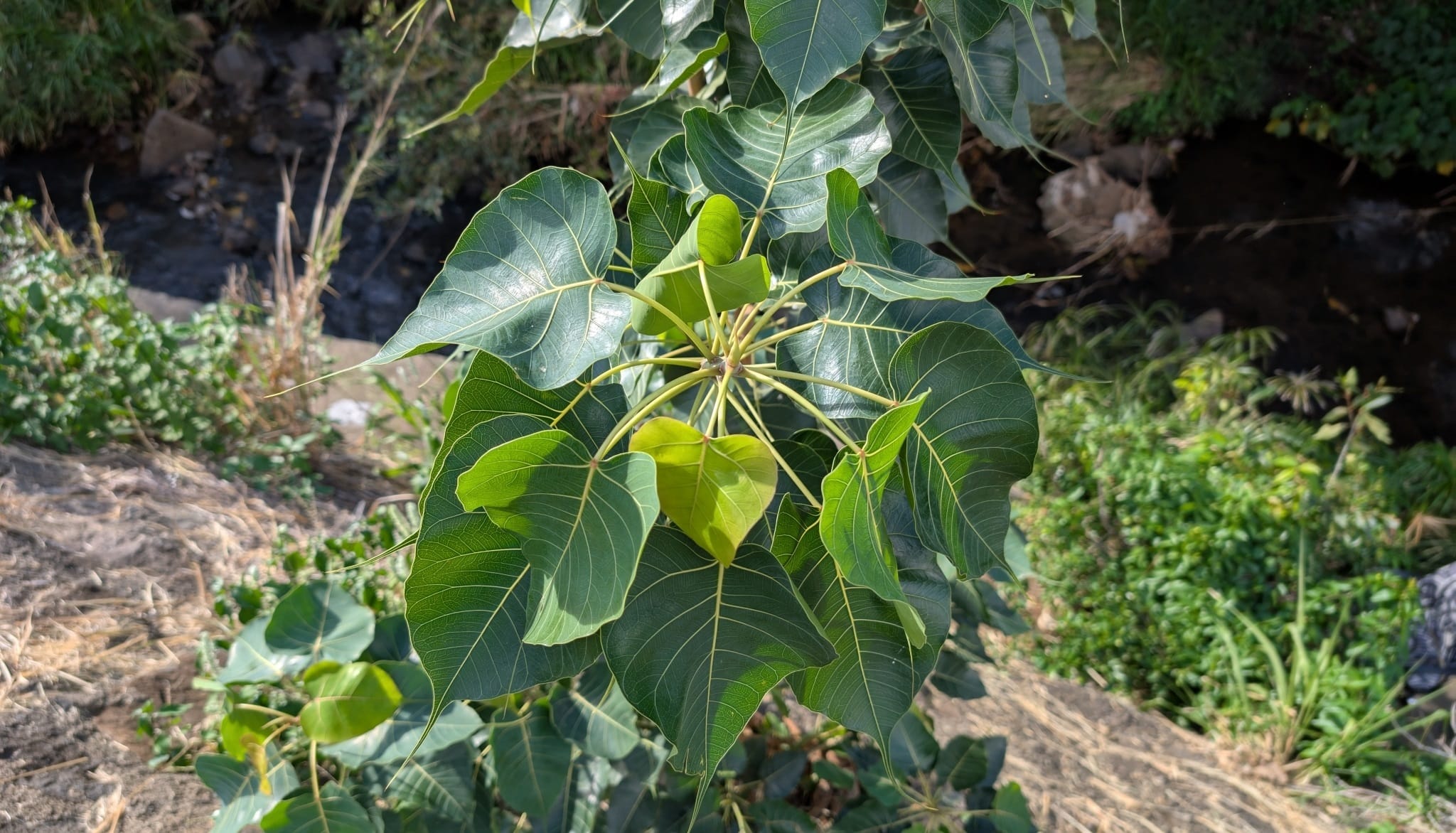The Peepal tree, scientifically known as Ficus religiosa, is a revered and versatile tree with immense benefits.
Renowned for its spiritual, medicinal, and ecological importance, the Peepal tree holds a special place in many cultures, particularly in South Asia.
The benefits of Peepal tree extend far beyond its symbolic value; it is a vital contributor to human and environmental well-being.
This ancient tree is celebrated for its ability to sustain life, purify air, and provide a sanctuary for wildlife.
Its cultural and historical significance, coupled with its wide-ranging applications in traditional medicine and environmental conservation, make it an invaluable resource for humanity.
History Of Peepal Tree
Before we dive into the benefits of peepal tree, lets check its history. the Peepal tree has been venerated since ancient times, with its roots tracing back to early human civilizations.
It is mentioned in various scriptures, including the Vedas, as a sacred and life-giving tree. In Buddhism, the Peepal tree gained prominence as the Bodhi tree under which Siddhartha Gautama attained enlightenment, becoming Lord Buddha.
In Hinduism, it is associated with deities such as Vishnu and Shiva, symbolizing life, fertility, and immortality. Jainism also regards the Peepal tree as a sacred entity.
Throughout history, the tree has been a gathering spot for spiritual teachings, meditation, and community discussions, solidifying its role as a beacon of knowledge and serenity.
Characteristics Of Peepal Tree
The Peepal tree is a large deciduous tree that can grow up to 30 meters in height.

It has heart-shaped leaves with long tips and bears small, round fruits that are purple when ripe.
The tree is known for its deep root system, long lifespan, and ability to thrive in various climatic conditions. It is also drought-resistant, making it a hardy species.
Environmental Benefits Of Peepal Tree
- Air Purification: The Peepal tree absorbs carbon dioxide and releases oxygen, even at night, making it a natural air purifier.
- Carbon Sequestration: Its dense foliage helps in capturing significant amounts of carbon dioxide, reducing greenhouse gases.
- Soil Conservation: Its extensive roots prevent soil erosion and improve soil fertility.
- Biodiversity Support: The tree provides habitat and food for birds, bees, and other wildlife.
- Temperature Regulation: Its dense canopy offers shade and helps regulate microclimates, reducing urban heat islands.
Benefits Of Peepal Tree
Lets explore some of the benefits of peepal tree:

- Medicinal Properties: The bark, leaves, and fruits of the Peepal tree have anti-inflammatory, antibacterial, and anti-diabetic properties.
- Stress Reduction: Sitting under a Peepal tree is believed to promote mental peace and reduce stress.
- Respiratory Health: Its ability to produce oxygen continuously helps improve air quality and respiratory health.
- Heart Health: Extracts from the tree are used in traditional medicine to support cardiovascular health.
- Skin Benefits: Peepal leaves and bark are used to treat skin disorders such as acne, eczema, and wounds.
- Digestive Aid: Its fruit and bark are known to alleviate digestive issues like constipation and dysentery.
Uses
- Traditional Medicine: The tree’s parts are used in Ayurveda to treat ailments like asthma, skin disorders, and digestive issues.
- Religious Practices: Peepal trees are often worshipped and considered sacred in various cultures.
- Furniture and Crafts: Its wood is used for making furniture and other crafts due to its durability.
- Eco-Friendly Products: The leaves are used to create biodegradable plates and bowls, contributing to sustainable practices.
Economic Significance
The Peepal tree contributes economically by providing raw materials for traditional medicines, crafts, and furniture.
Additionally, its leaves are used for making eco-friendly plates and bowls, which have gained popularity in sustainable markets.
The tree also attracts eco-tourism and serves as an educational tool for promoting environmental awareness.
Conservation and Challenges
Despite its benefits, the Peepal tree faces threats from urbanization, deforestation, and lack of awareness about its significance.
Conservation efforts, including plantation drives and education campaigns, are essential to preserve this valuable species.
Encouraging its cultivation in urban areas and educating communities about its ecological role can help ensure its survival for future generations.
Interesting Facts Of Peepal Tree
Heres some interesting facts about peepal trees:

- The Peepal tree is one of the longest-living trees, with some specimens believed to be over 2,000 years old.
- It is also known as the “Sacred Fig” due to its spiritual importance.
- The tree is mentioned in ancient texts like the Bhagavad Gita, where it is described as a representation of the divine.
- Unlike most trees, the Peepal tree releases oxygen both during the day and at night.
- The Ashvattha, a term used for the Peepal tree in Sanskrit, signifies impermanence and continuity, reflecting life’s cyclical nature.
- Certain communities believe that the rustling of its leaves is a way the tree communicates with the divine.
Culinary Uses
While the Peepal tree is not primarily known for its culinary uses, its fruits are sometimes consumed and have a slightly sweet taste. The leaves are used in certain traditional preparations, particularly in rural areas.
Nutritional Benefits
The fruits of the Peepal tree are rich in antioxidants, vitamins, and minerals. They are known to aid digestion, improve immunity, and provide a natural source of energy.
Traditional Dishes
In some cultures, the tender leaves and fruits are used in herbal teas and chutneys, offering a unique flavor and nutritional benefits.
Caution
While the Peepal tree has numerous benefits, certain parts can cause allergic reactions in sensitive individuals.
The latex from its leaves and bark can be irritating to the skin and eyes in some cases. Direct consumption of its raw parts should be done with caution and under expert guidance.
Pregnant women and individuals with specific medical conditions should consult a healthcare provider before using Peepal-based remedies.
Additionally, the tree’s fruits and extracts may interact with certain medications, requiring professional advice before use.
Conclusion
The Peepal tree is a remarkable natural asset with a wide range of benefits spanning environmental, medicinal, and economic spheres.
Its historical and spiritual significance further underscores its importance in human culture. As a source of oxygen, shelter, and healing, the Peepal tree plays a crucial role in sustaining life on Earth.
It serves as a living testament to the symbiotic relationship between humans and nature, reminding us of the importance of preserving our natural heritage.
By fostering awareness about its benefits and promoting its conservation, we can ensure the tree’s survival in an ever-changing world.
Planting and protecting Peepal trees can significantly contribute to environmental sustainability and community well-being.
The Peepal tree stands as a beacon of life, resilience, and hope, offering solutions to modern challenges while connecting us to our ancestral roots. Embracing this sacred tree not only honors tradition but also paves the way for a greener, healthier, and more harmonious future.
Also Read: Benefits of Neem Tree (Azadirachta indica) Uncovering Its History, Benefits, Uses, Facts, and Safety
Well, what do you think about the article?
Did you enjoy reading “Benefits of Peepal Tree (Ficus religiosa) Uses, History, Facts And Safety“?
We really hope that you have found this article informative and engaging. If you have any thoughts or comments about this post, please feel free to share them in the comment section below. We appreciate your feedback and would be glad to hear from you.
To see more content like this check the gardening section of Money For My Beer.

